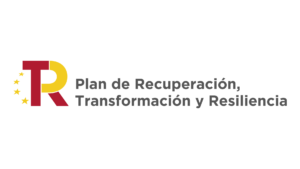Anxiety and Stress
PSYCHOLOGICAL TREATMENTS
Anxiety is the set of innate responses (physical, cognitive, and behavioral) that people experience that keep us alert to potential dangers or threats, such as running immediately if attacked by a wild animal. However, these responses They can cause us great discomfort if they appear disproportionately and before harmless stimuli, such as public speaking.

The most frequent symptoms in anxiety that we treat in consultation are:
- Tachycardia. Sensation of pressure in the chest and that we are short of breath.
- Muscle tension and tremors.
- Difficulty falling asleep.
- Excessively negative and/or catastrophic thoughts.
- Disorientation and feeling of loss of control.
- You avoid going to certain places, social relationships, etc.
- Constant check that everything is in order.
Despite the above, anxiety also provides us with a proper component of caution that can be useful when facing dangerous situations and maintaining concentration. The key is in learn strategies that help us manage in an appropriate way the anxiety responses, so that instead of our enemies, they become allies.
How do we work anxiety in our psychology consultation?
In our consultation at Policlínica del Río-Hortega, we will address anxiety through Cognitive-Behavioral Therapy. Said therapy incorporates behavioral elements that are based on the learning of poorly learned patterns and on the distorted affective and cognitive processes that cause the negative symptoms. Bliss therapy is structured through an active and directive method, in which both the patient and the professional work together. In addition, apart from the tasks that are carried out in consultation, others are also proposed to work at home.
Psychological techniques that are put into practice during therapy:
- Psychoeducation: The patient is informed about the nature of the anxiety (functionality and dysfunctionality of anxiety, symptomatology and its relationship with the ABC model).
- Relaxation training: The patient is taught slow diaphragmatic relaxation and progressive muscle relaxation.
- Identification of counterproductive behaviors: Through a functional analysis, the patient is helped to identify which are the behaviors that are favoring the discomfort to be maintained over time. It is explained to him that although he carries out behaviors that in the short term can alleviate the discomfort, in the long term they hinder recovery.
- Prevention of worry behaviors: The patient is explained what the distraction techniques consist of. In this way he will learn to put them into practice as an alternative to the worrying behaviors that he intends to avoid.
- Problem solving training: The objective of this technique is for the person to improve their coping strategies. To do this, the person is taught to identify the problem or problems that he wants to solve, define the problem in detail, look for solutions, analyze the consequences, take action and examine the results.
- Cognitive techniques: Restructuring of catastrophic interpretations and overestimation of negative events occurring, training in controlling automatic thoughts, etc.
- Systematic desensitization and controlled and progressive exposure to feared situations: To do this, we can use live, imaginative, interoceptive, written, and simulated exposure. Through this technique, the patient must progressively expose himself to the situation that causes him discomfort.





